Petra is an ancient city in Jordan famous for its rock-cut architecture and water conduits. This was the capital of the Nabataean kingdom and is now a UNESCO World Heritage Site.
We visited Jordan with our kids, and of course, we visited Petra, one of the most famous ancient sites not only in Jordan or the Middle East but also one of the most famous historical archaeological sites in the world and one of the most recognizable landmarks in Asia
We found the whole site truly fascinating and also fun to explore, by foot and on donkeys. Our own experience led us to learn more interesting facts about Petra.
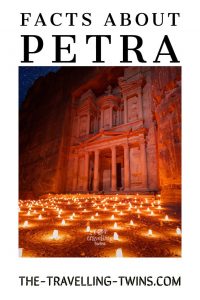
Petra, Rose City or the Lost City
Petra goes by several names: Petra, The Rose City, The Lost City, and Al-Batra.
The name Petra like the name Peter is derived from the Greek word for rock. It was named by Greek visitors during the 4th century BC.
The site is sometimes known as “the Rose City” because the facades are carved from – you guessed it – rose-pink rocks.
Unlike Machu Picchu, for example, Petra was never lost to the local inhabitants; however, it received the romantic strapline “the Lost City” when it was “discovered” in 1812, by western culture, courtesy of Swiss explorer Johann Ludwig Burckhardt.
Meanwhile, although by that time it was deserted, the site, known as Al-Batra in Arabic, had been inhabited by different cultures, perhaps as long ago as 9,000 years.
A short history of Petra
Whether or not Petra was one of mankind’s earliest habitations, there is evidence of truly ancient stone age inhabitation at Petra, several millennia BCE and some believe that the first-named tribe here were cave dwellers known as Horites.
There are more specific archaeological finds here dated to the 9th, 8th and 7th centuries BCE, including caves and rainwater cisterns. This part of Jordan was settled by the Edomite tribe at that time. And some finds are possible as old 11 centuries BCE. The Edomites were mentioned in the Bible as having refused access to their land by Moses after his escape from Egypt.
More certainly, the Al Batra site was occupied by the Nabataean people who first settled here around 312 BC due to its proximity to trade routes and water sources, and they are known to have carved the decorative monolithic buildings and more intricate irrigation systems out of the mountains that we can explore today as tourists.
The Nabataean Kingdom flourished until 106 AD, when it was annexed by the Roman Empire. But by 400 AD, Petra had been abandoned after a few severe earthquakes, including one in 363 AD, which destroyed about half of the city.
When Johann Ludwig Burckhardt arrived in the nineteenth century, the place, though not “lost”, had been deserted for more than a millennium.
Who were the Nabataeans?
The Nabataean people were an Arab Bedouin tribe who traded extensively with the western world.
They were extremely resourceful people who developed their own language but also mastered Greek and Latin. They invented a system of water collection and delivery that was unsurpassed in its sophistication for another thousand years.
The Nabataean civilization built a network of roads for trade and water channels fr drinking and irrigation, which they dedicated to the Nabataean deity Dushara.
Petra’s Location
Petra is located in the Jordanian Desert 90 km north from the Red Sea and 180 Km south from the Dead Sea, between Wadi Araba and Wadi el-Hasa.
Unesco World Heritage Site
in 1985 Petra was declared a World Heritage Site by the United Nations Education, Scientific and Cultural Organization (UNESCO) for being “one of the most precious cultural properties of man’s cultural heritage.”
It was recognized as a site that bears witness to an urban society’s self-understanding and culture through time.
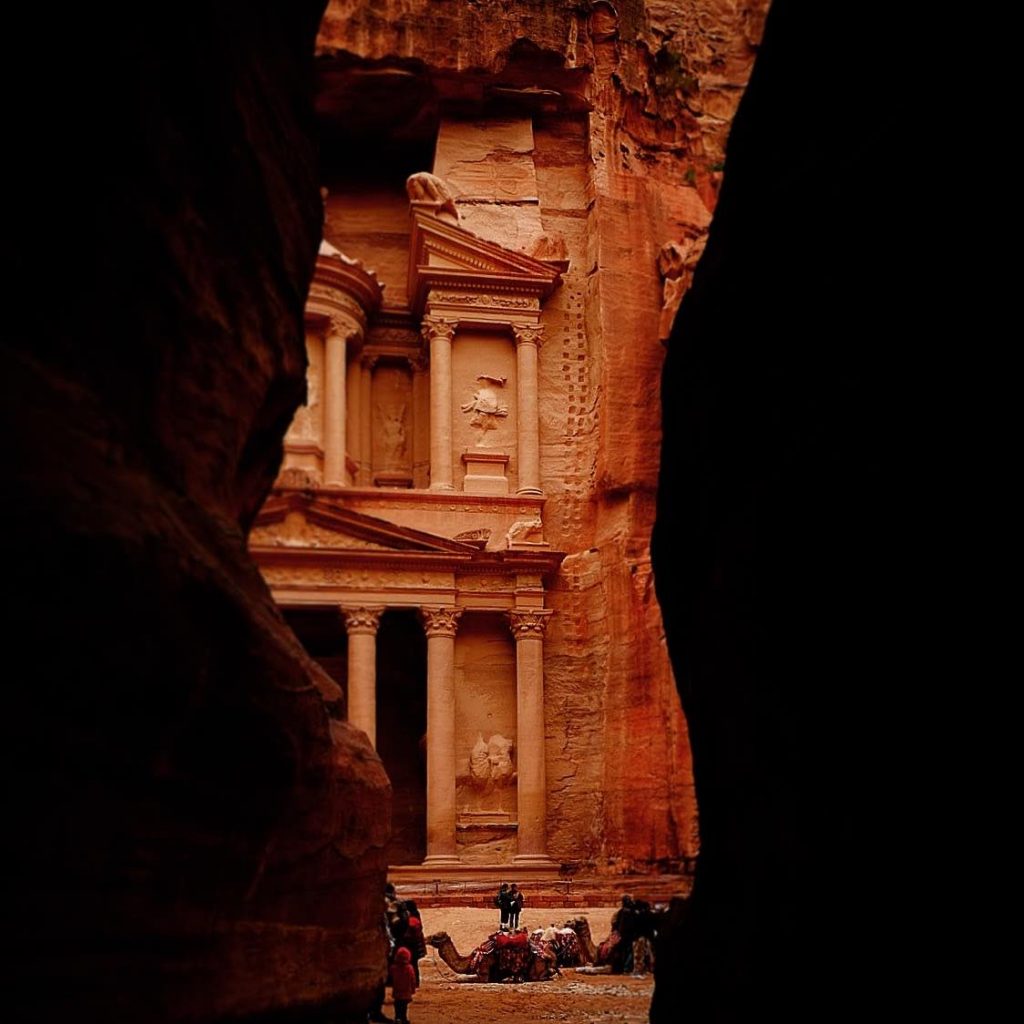
New Seven Wonders of the World
In 2007 Petra was recognized as one of the New Seven Wonders of the World.
Other wonders include Chichen Itza (Mexico), Christ Redeemer (Brazil), Colosseum (Italy), Machu Picchu (Peru), Taj Mahal (India) and the Great Wall of China.
The Famous Treasury is no Treasury at all
The Treasury is the most famous rock structure in Petra. The Arabic name is Al-Khazneh, which also means “Treasury” It’s so named because it was thought to be the Treasury of the Nabataean king, but it’s actually not a treasury at all.
The Treasury was built around the 1st century BC, probably as a tomb for Nabatean king Aretas IV, But there are no inscriptions or clues pointing to its true purpose.
The facade of the Treasury is well preserved, but the inside has been heavily vandalized and looted.
Petra is one of the oldest cities in the world.
The first written mentions of Petra date around the 3rd century BC, making Petra at least 2,300 years old and one of the oldest cities in the world.
Only 15 % of Petra is discovered
Petra is a massive site, and with difficult access, Petra has remained relatively untouched by humans, with over 85% of the city still underground, unexplored and untouched.
The descendants of the Nabateans still live in the area.
Nabatean civilizations have disappeared, and only faint memories echo in specular buildings from Petra. But a local Bedouin tribe had its roots in Nabatean times as well. Many of these Bedouin lived in the ancient city and work in the area today, acting as guides for their tour to share their secrets with modern travelers.
Petra – The Royal Tombs City
There are more than 800 tombs in Petra, most of which are not open to the public.
The tombs are called “royal tombs” because of their elaborate design and because many of them were used to bury Nabataean royalty.
One of the most famous tombs in Petra is the Iconic Urn Tomb, which is known for its intricate carvings and beautiful frescoes.
Petra has featured in some great movies
Petra was part of many blockbusters films including, Indiana Jones, the Mummy Returns, Transformers 4 and the recent remake of Aladdin.
Petra played the Crescent Moon Canyon in the movie Indiana Jones and the Last Crusade. In the same movie, the Holy Grail was hidden in Petra.
The crusaders had a base at Petra
In the middle ages, the Christian Crusades, whose mission was to retake the holy land from the Muslims, actually had a base here. On one of the hills above this site, the remains of Al-Wu’ayran Castle, which was built in the 12th century, can still be seen today.
Visiting Petra
Petra Archaeological Site is open to visitors, and there are hotels both simple and luxurious in the nearby town where you can also buy any quality of souvenir from the very simple to those made with the most ornate Arabic craftsmanship. You must purchase a day ticket in advance to visit the historic site and gain access to its tour guides, who are knowledgeable about the Nabataean culture and history of the area.
We visited there in 2004, as part of a very enjoyable tour of Jordan, and it has remained one of the most memorable sites we have visited worldwide.
Fascinating facts about Petra Jordan – Summary
Petra is not only one of the most famous sites in Jordan or the Middle East but one of the most famous archeological sites in the world. You can visit the extensive site on foot, riding on a donkey or even in a small carriage. However you see it, you are sure to be stunned both by the beauty of your first sight of the Treasury facade and by the size and quality of the whole site.
Petra facts – pin it for later
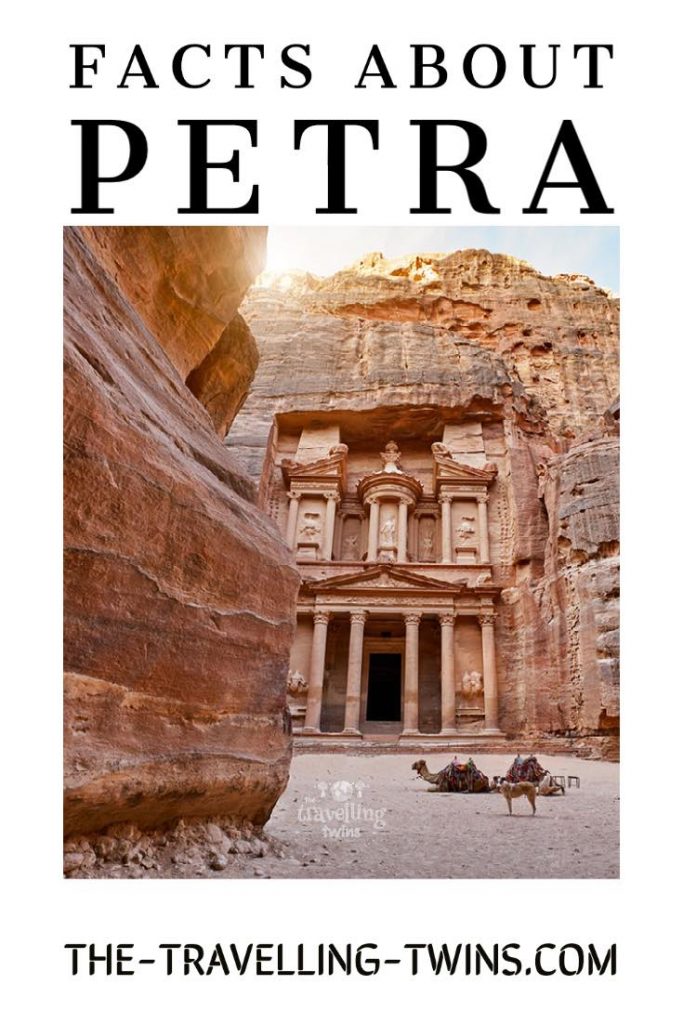
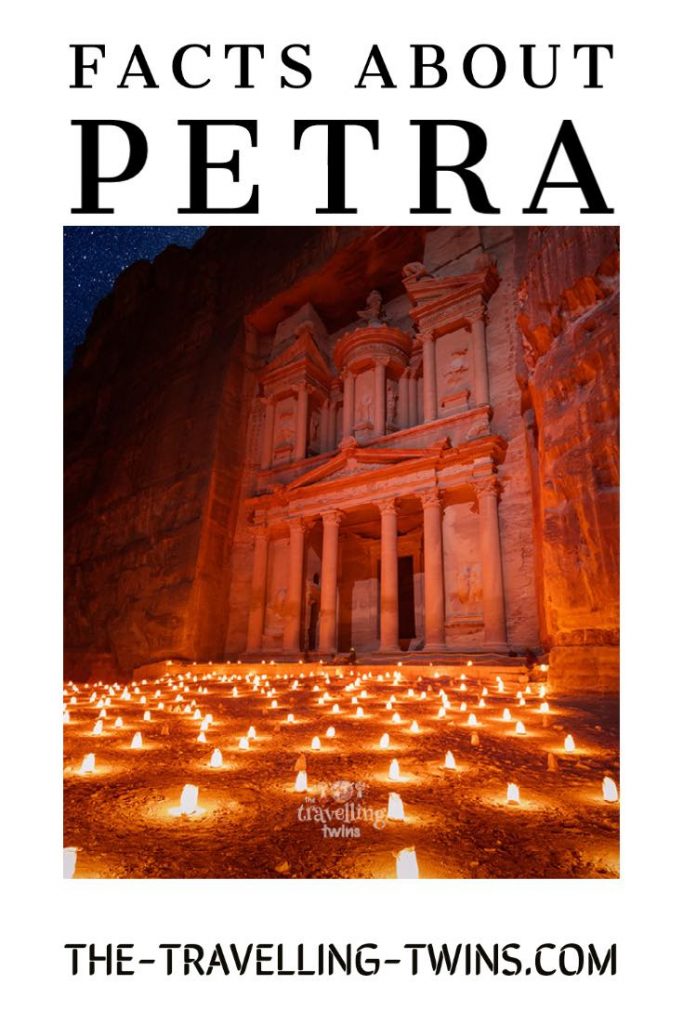
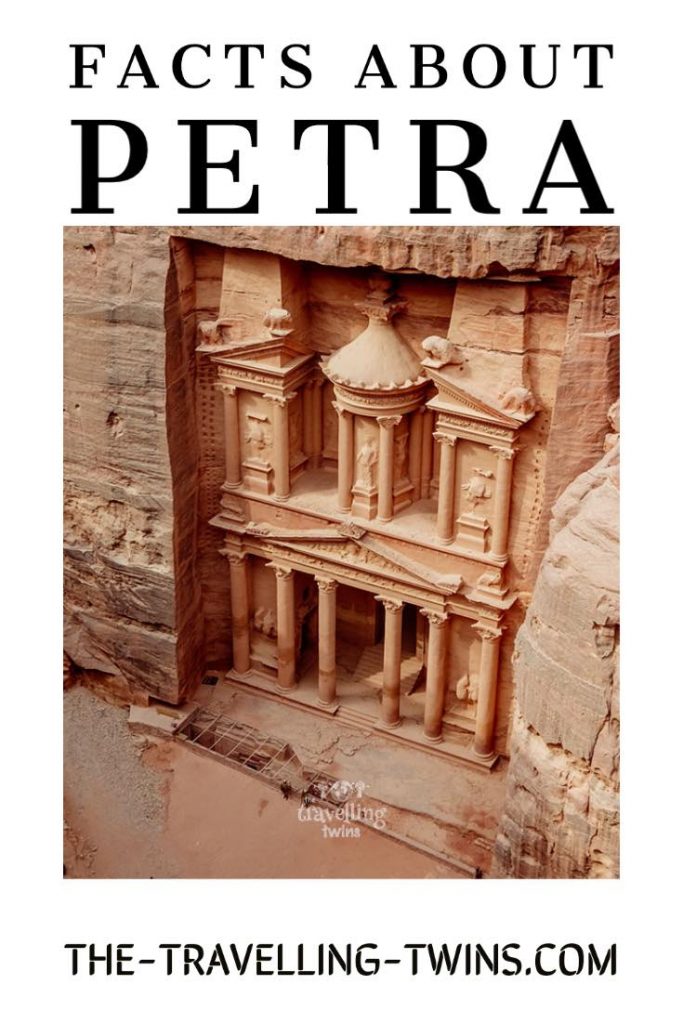
Privacy Policy Disclaimer
This website uses affiliate links for income and support.
If you like our website, please consider using these links. You will be directed to the vendor, and we will get a small commission on your purchase price at no increased cost to you.
We have researched facts stated here as far as practicable but please check anything critical before committing your time and money. We do not claim any special knowledge or expertise, and we are not consultants for our readers.